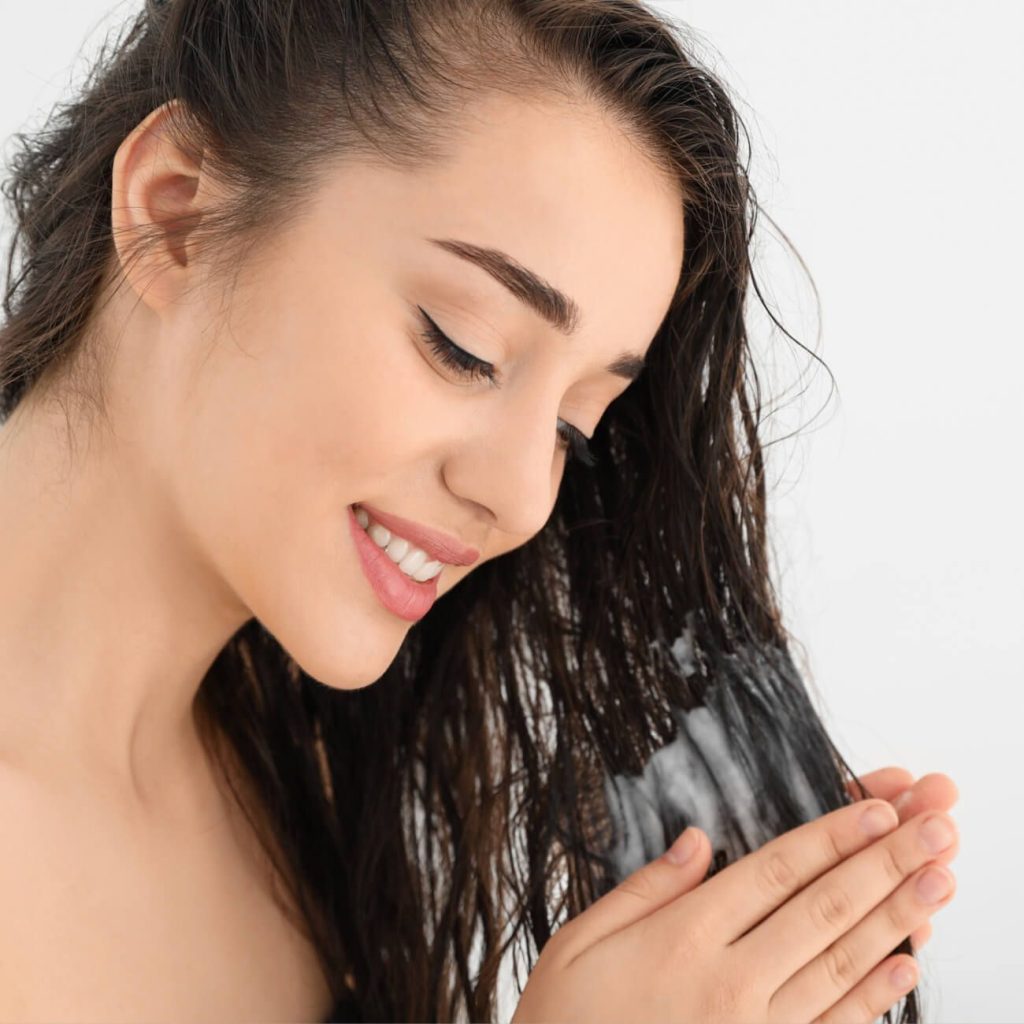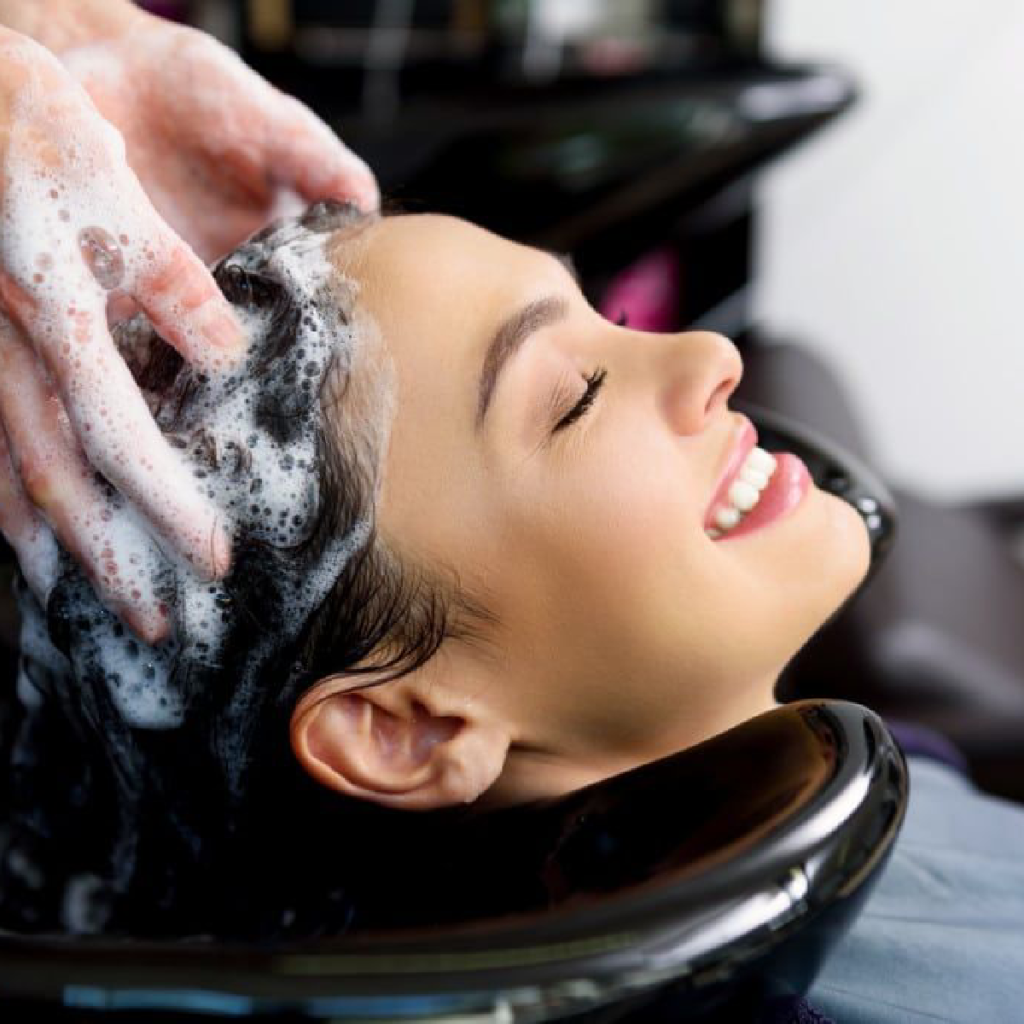Discover effective tips and tricks on how to protect and maintain chemically treated or colored hair while swimming.
How to Protect and Maintain Chemically Treated or Colored Hair While Swimming
Are you tired of your beautiful chemically treated or colored hair being ruined every time you take a dip in the pool? Don’t worry, we’ve got you covered! In this article, we will equip you with all the essential tips and tricks to keep your hair looking fabulous, even after a swim. So grab your swim cap and let’s dive in!

Understanding the Effects of Chlorine on Chemically Treated Hair
Before we jump into the solutions, it’s important to know why chlorine can be a troublemaker for chemically treated hair. The truth is, chlorine has a sneaky way of wreaking havoc on our locks. It strips away the natural oils and proteins that protect our hair, leaving it dry, brittle, and prone to breakage.
When we dive into a chlorinated pool or spend time in a hot tub, we often don’t realize the damage that chlorine can do to our hair. Chlorine acts as a bleach, which means it can lighten the color of your hair if it’s chemically treated. This can be particularly frustrating if you’ve just spent time and money getting the perfect hair color. Additionally, chlorine penetrates the hair shaft, causing the cuticle to lift and making it more vulnerable to damage.
But why is colored hair more susceptible to the damaging effects of chlorine? If you’ve gone the extra mile to color your hair, you need to be extra careful. Colored hair is already more porous, meaning it absorbs moisture and chemicals more easily. This increased porosity makes it even more susceptible to the damaging effects of chlorine. So, if you’ve recently colored your hair and plan on taking a dip in the pool, it’s important to take precautions to protect your hair.
One of the reasons why chlorine is so damaging to chemically treated hair is because it has the ability to strip away the natural oils and proteins that protect our hair. These oils and proteins act as a barrier, keeping our hair moisturized and strong. When chlorine comes into contact with our hair, it breaks down this protective barrier, leaving our hair vulnerable to damage.
Furthermore, chlorine acts as a bleach, which can lighten the color of chemically treated hair. This can be particularly frustrating for those who have recently colored their hair, as it can alter the desired shade. The bleach-like properties of chlorine can also lead to a dull and lackluster appearance, diminishing the vibrancy of the hair color.
When chlorine penetrates the hair shaft, it causes the cuticle, the outermost layer of the hair, to lift. This lifting of the cuticle makes the hair more susceptible to damage from external factors such as heat, styling tools, and environmental pollutants. The lifted cuticle also results in rough and frizzy hair, as the hair strands become more tangled and prone to breakage.
For those with colored hair, the damaging effects of chlorine can be even more pronounced. Colored hair is already more porous than natural hair, meaning it has more openings in the cuticle layer. This increased porosity allows for easier absorption of moisture and chemicals, including chlorine. As a result, colored hair can experience more significant color fading and damage when exposed to chlorinated water.
So, if you’ve recently colored your hair or have chemically treated hair, it’s important to take steps to protect it from the damaging effects of chlorine. Whether it’s using a swim cap, applying a protective leave-in conditioner, or rinsing your hair with fresh water before and after swimming, these precautions can help minimize the negative impact of chlorine on your hair.
Pre-Swimming Hair Care Tips
Now that you understand the enemy, it’s time to arm yourself with a pre-swimming hair care routine. By following these tips, you’ll provide an extra layer of defense for your lovely locks.
Wetting Your Hair Before Swimming
Before you plunge into the pool, wet your hair with fresh water. By saturating your hair with clean H2O, you’re minimizing the amount of chlorinated water your hair can absorb. Think of it as a preemptive strike against chlorine!
But why is wetting your hair before swimming so important? Well, when your hair is already wet, it becomes less porous, meaning it won’t absorb as much chlorine. This simple step can make a significant difference in the health and appearance of your hair. So, before you dive in, take a moment to thoroughly wet your hair, ensuring that every strand is coated with fresh water.
Additionally, wetting your hair before swimming has another benefit. It helps to prevent your hair from becoming dehydrated. Chlorinated water can strip your hair of its natural oils, leaving it dry, brittle, and prone to breakage. By wetting your hair beforehand, you’re essentially creating a barrier between your strands and the chlorine, reducing the risk of moisture loss.
Applying a Protective Hair Mask
Another excellent way to shield your hair from chlorine is by applying a hair mask. Look for a mask specifically designed for chemically treated or colored hair. These masks often contain ingredients that create a protective barrier, keeping the chlorine at bay. Apply the mask before hitting the pool to ensure maximum protection.
Now, let’s dive deeper into the world of protective hair masks. These masks are not only great for shielding your hair from chlorine but also for nourishing and hydrating your strands. They are packed with beneficial ingredients such as vitamins, proteins, and natural oils that help to replenish moisture and repair damage caused by environmental factors.
When choosing a hair mask, opt for one that suits your hair type and concerns. If you have dry, damaged hair, look for a mask that contains ingredients like argan oil, shea butter, or keratin. These ingredients will deeply moisturize and strengthen your hair, leaving it soft and manageable.
On the other hand, if you have color-treated hair, go for a mask that is specifically formulated to protect and preserve your hair color. These masks often contain UV filters and antioxidants that prevent color fading and keep your hair vibrant and lustrous.
Applying a hair mask before swimming not only provides a barrier against chlorine but also allows the mask’s nourishing ingredients to penetrate your hair cuticles. This double-duty protection ensures that your hair remains strong, healthy, and beautiful, even after hours spent in the pool.
Choosing the Right Swim Cap for Chemically Treated Hair
A swim cap can be your hair’s new best friend in the pool. Not only does it protect your hair from the damaging effects of chlorine, but it also helps to keep your hair dry and prevent it from getting tangled. When selecting the perfect swim cap, there are a few things to consider that can make a big difference in the health and appearance of your chemically treated hair.
Material Considerations
One of the most important factors to consider when choosing a swim cap for chemically treated hair is the material it is made of. Opting for a swim cap made of silicone or latex can provide a tight seal that keeps water, and more importantly, chlorine, from seeping into your hair. These materials are known for their durability and ability to withstand the harsh chemicals found in most swimming pools.
Furthermore, silicone swim caps are particularly beneficial for chemically treated hair because they have a smooth surface that helps to minimize friction and reduce the risk of hair breakage. This is especially important for individuals with fragile or weakened hair due to chemical treatments such as coloring, perming, or relaxing.
Proper Fit and Usage
While choosing the right material is crucial, ensuring that your swim cap fits properly is equally important. A well-fitted swim cap not only offers better protection but also enhances your swimming experience by providing a comfortable and secure fit.
When trying on a swim cap, make sure it fits snugly without pulling on your hair. Adjust the cap to cover your hairline and tuck in any flyaways. This will not only keep your hair dry but also prevent chlorine from seeping in and causing damage. Remember, a well-fitted cap is your first line of defense against chlorine-induced hair problems!
It’s also worth mentioning that swim caps are not just for competitive swimmers. Even if you’re not a professional swimmer, wearing a swim cap can still offer numerous benefits for your chemically treated hair. Whether you’re taking a leisurely dip in the pool or engaging in water aerobics, a swim cap can protect your hair from the damaging effects of chlorine and help maintain its health and vibrancy.
In conclusion, choosing the right swim cap for chemically treated hair is essential for maintaining the health and appearance of your locks. By opting for a swim cap made of silicone or latex and ensuring a proper fit, you can enjoy your time in the pool without worrying about chlorine damage. So, next time you hit the water, don’t forget to grab your trusty swim cap and give your hair the protection it deserves!
Post-Swimming Hair Care Routine
Okay, you’ve conquered the pool, and now it’s time to give your hair some well-deserved TLC.
Immediate Post-Swim Steps
As soon as you finish swimming, rinse your hair thoroughly with clean water. This will help wash away chlorine residue. Avoid hot water, as it can further dry out your hair. Once rinsed, gently towel-dry your hair, being careful not to rub vigorously.
Deep Conditioning Treatments
To restore moisture and replenish vital nutrients, treat your hair to a deep conditioning session. Look for conditioners specifically formulated for chemically treated hair. Apply the conditioner and leave it on for the recommended time. Rinse it out and voila! Your hair will be revived and ready for its next adventure.
Maintaining Hair Health Between Swimming Sessions
Your hair deserves continuous care even when you’re not at the pool. Make these habits a part of your routine:

Regular Hair Treatments
Indulge your hair in regular treatments to keep it strong and resilient. Seek out products that nourish, hydrate, and repair chemically treated hair. Using these treatments at least once a week will go a long way in maintaining hair health.
Diet and Lifestyle Changes
Your diet plays a significant role in your hair’s overall health. Incorporate foods rich in vitamins, minerals, and antioxidants to promote hair strength and growth. Additionally, avoid excessive heat styling, as it can further damage your treated tresses.
Now that you’re armed with these essential tips and tricks, you can confidently enjoy your time in the pool without worrying about the condition of your chemically treated or colored hair. Embrace your inner mermaid, splash about, and let your hair shine! Remember, with the right protection and care, you can have gorgeous locks that rival even the most magical sea creatures.





